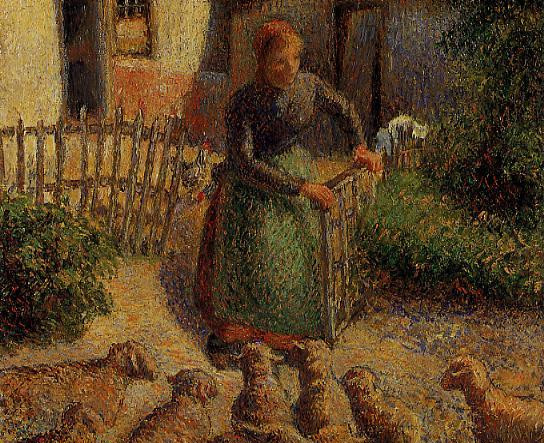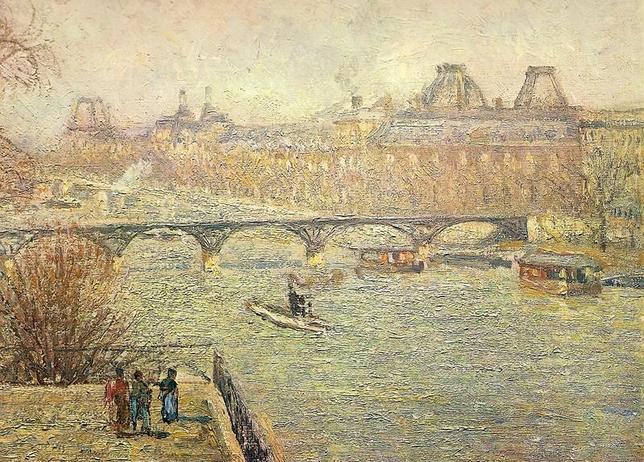Art & Exhibitions
University of Oklahoma Will Return Camille Pissarro Painting to Holocaust Survivor
The university fought for years to keep it.

The university fought for years to keep it.

Sarah Cascone

After a three-year legal dispute, the University of Oklahoma (OU) has agreed to return Camille Pissarro‘s 1886 painting La Bergère Rentrant des Moutons (Shepherdess Bringing in Sheep) to French Holocaust survivor Léone Meyer.
The terms of the settlement transfer ownership of the work, which was donated to the university by Clara Weitzenhoffer in 2000, to Meyer, the adopted daughter of original owner Raoul Meyer, reports the Oklahoman. The Nazis stole the painting during the German occupation of Paris.
This summer, the painting will return to France, to be exhibited for five years at yet-to-be-determined museum selected by both parties. Moving forward, the canvas will be shown for three-year intervals at OU’s Fred Jones Jr. Museum of Art and in France.
“Léone Meyer has agreed that, rather than getting the painting back for her own living room, to continue the public display of the painting for the public,” her lawyer, Pierre Ciric, told the New York Times.
“This is a wonderful victory,” said Oklahoma representative Paul Wesselhoft at a press conference. “It’s unfortunate that it took so long.”
“Ladies and gentlemen, La Bergère is free, La Bergère is returning home,” added a pleased Eric Sundby, president of OU’s Holocaust Remembrance and Restitution Society. “This victory for the family is also a victory for those murdered during the Holocaust.”
In May of 2015, in response to the ongoing dispute, Oklahoma legislators signed a non-binding resolution calling on the university to investigate its collection and return compromised works.
“The university is pleased that a constructive agreement has been reached,” said OU president David Boren in a statement. “The rotating display of the work meets the university’s long-stated goal to ensure the painting remains available to Oklahomans and that it continues to be available for educational purposes.”

Camille Pissarro La Seine vue du Pont-Neuf, au fond le Louvre (1902) has been found in Gurlitt’s collection and determined as Nazi-looted.
Image: Kunstmuseum Bern via bundesregierung.de
It remains to be seen whether other institutions, such as the Thyssen-Bornemisza Museum in Madrid, will follow the university’s example. This past June, a Los Angeles judge ruled that the Spanish museum was not obligated to return Pissarro’s Rue Saint-Honoré, Après-midi, Effet de Pluie (1887) to the heirs of Lilly Cassirer, who was forced to sell it while fleeing Germany in 1939. In his ruling, Judge John F. Walter recommended that the museum consider making a compromise with the original owner’s heirs.
Other Pissarro works with links to the Nazis include La Seine vue du Pont-Neuf, au fond le Louvre, discovered in late German art collector Cornelius Gurlitt’s Munich apartment in 2012.